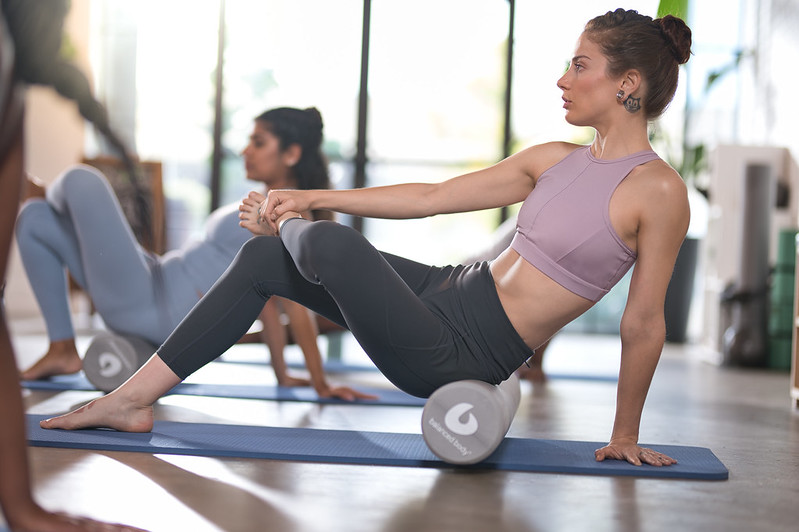Strength training is one of the most effective ways to improve overall health, enhance physical fitness, and build confidence in your body. Yet, for many, the idea of stepping into a gym or lifting weights can feel daunting. This is especially true for beginners who may worry about “doing it right,” fear judgment, or feel pressured to meet unrealistic fitness standards.
This guide is designed to demystify strength training, focusing on inclusivity and ease. Whether you’re tall, short, slim, curvy, or anywhere in between, strength training is for you. Here’s how to get started, stay consistent, and build strength without unnecessary pressure.
Why Strength Training Is for Everyone
Strength training isn’t just about lifting heavy weights or achieving a sculpted physique. It’s about improving your quality of life by enhancing your physical capabilities. Regardless of your body type, this form of exercise offers numerous benefits:
- Improved Functional Strength: Everyday tasks like carrying groceries, climbing stairs, or playing with kids become easier.
- Increased Bone Density: Strength training helps prevent bone loss and reduces the risk of osteoporosis.
- Enhanced Metabolism: Building muscle increases your resting metabolic rate, helping your body burn more calories at rest.
- Better Mental Health: Strength training releases endorphins, reducing stress and boosting confidence.
- Customizable Workouts: Exercises can be adapted to fit any fitness level, body type, or goal.
Breaking the Myths About Strength Training
Before diving in, it’s important to address common misconceptions about strength training:
- Myth: Strength training will make you bulky.
Truth: Building significant muscle mass requires years of intense training and a specific diet. For most people, strength training simply results in a toned and stronger physique. - Myth: You need to join a gym to get started.
Truth: Strength training can be done anywhere—at home, in the park, or at the gym—using your body weight, resistance bands, or light weights. - Myth: Strength training is only for younger people.
Truth: People of all ages can benefit from strength training, and it’s especially important for maintaining muscle mass and bone density as we age.
Getting Started: The Basics of Strength Training
1. Understand the Core Principles
Strength training involves working against resistance to build muscle. This can include:
- Bodyweight exercises (e.g., squats, push-ups).
- Free weights (e.g., dumbbells, kettlebells).
- Resistance bands.
- Weight machines.
2. Start Small
You don’t need to lift heavy weights or perform complex movements on your first day. Focus on mastering form and technique before adding resistance. This minimizes the risk of injury and builds a solid foundation.
3. Set Realistic Goals
Your goals should be specific, measurable, and achievable. For example:
- Improve overall strength.
- Build endurance.
- Enhance mobility and flexibility.
4. Warm Up Properly
Always warm up before starting your workout. A 5-10 minute dynamic warm-up, such as walking or light stretching, prepares your muscles and reduces the risk of injury.
Beginner-Friendly Strength Training Exercises
Here are simple exercises that cater to all body types and fitness levels. These moves target major muscle groups and can be performed at home or in a gym.
1. Bodyweight Squats
- What It Works: Legs, glutes, and core.
- How to Do It:
- Stand with your feet shoulder-width apart.
- Lower your body as if sitting into a chair, keeping your chest upright.
- Push through your heels to return to standing.
- Tip: Start with shallow squats and increase depth as you gain confidence.
2. Push-Ups
- What It Works: Chest, shoulders, triceps, and core.
- How to Do It:
- Start in a plank position with your hands under your shoulders.
- Lower your body until your chest almost touches the floor.
- Push back up to the starting position.
- Tip: Modify by performing push-ups on your knees or against a wall if needed.
3. Deadlifts with Resistance Bands
- What It Works: Glutes, hamstrings, and lower back.
- How to Do It:
- Stand on a resistance band with your feet shoulder-width apart.
- Hold the band’s handles and hinge at your hips, lowering your hands toward the ground.
- Return to standing by engaging your glutes.
- Tip: Keep your back flat and avoid rounding your shoulders.
4. Plank Holds
- What It Works: Core, shoulders, and arms.
- How to Do It:
- Get into a push-up position with your elbows directly under your shoulders.
- Hold your body in a straight line from head to heels.
- Tip: Start with 10-15 seconds and gradually increase the duration.
5. Step-Ups
- What It Works: Quads, glutes, and calves.
- How to Do It:
- Stand in front of a sturdy bench or step.
- Step one foot onto the bench and drive through your heel to lift your body.
- Lower back down and repeat on the other side.
- Tip: Use a lower step if you’re just starting out.
Designing Your First Workout Routine
A beginner’s strength training routine should be simple and balanced, targeting all major muscle groups. Here’s an example:
| Day | Exercises | Reps/Sets |
|---|---|---|
| Day 1 (Full Body) | Squats, Push-Ups, Plank Holds | 3 sets of 10-15 reps |
| Day 2 (Rest/Active Recovery) | Light yoga or walking | – |
| Day 3 (Upper Body) | Step-Ups, Deadlifts with Resistance Bands | 3 sets of 10-15 reps |
| Day 4 (Rest) | – | – |
| Day 5 (Core) | Plank Holds, Side Planks, Bicycle Crunches | 3 sets of 10-15 reps |
| Day 6 (Rest) | – | – |
| Day 7 (Light Activity) | Stretching or walking | – |
Staying Motivated and Avoiding Pressure
1. Focus on Progress, Not Perfection
Strength training is about small, consistent improvements. Celebrate milestones like lifting a heavier weight or completing an extra set.
2. Avoid Comparisons
Your journey is unique. Avoid comparing your progress to others, whether online or in the gym.
3. Listen to Your Body
Rest when needed and avoid pushing through pain. Recovery is just as important as exercise.
4. Make It Enjoyable
Choose exercises you enjoy and mix up your routine to keep it fun and engaging.
Embracing Body Positivity in Strength Training
Strength training is not about changing your body to fit a certain mold—it’s about celebrating what your body can do. No matter your size, shape, or fitness level, every step you take toward building strength is a step toward a healthier, happier you.
Conclusion: Strength Without Pressure
Strength training is a journey of self-discovery and empowerment. By focusing on progress over perfection, setting realistic goals, and prioritizing enjoyment, you can build strength without the weight of societal pressure.
Remember, strength is not just physical—it’s mental and emotional. As you grow stronger, you’ll find that your confidence, resilience, and self-love flourish as well. So take that first step, and let your journey begin.



